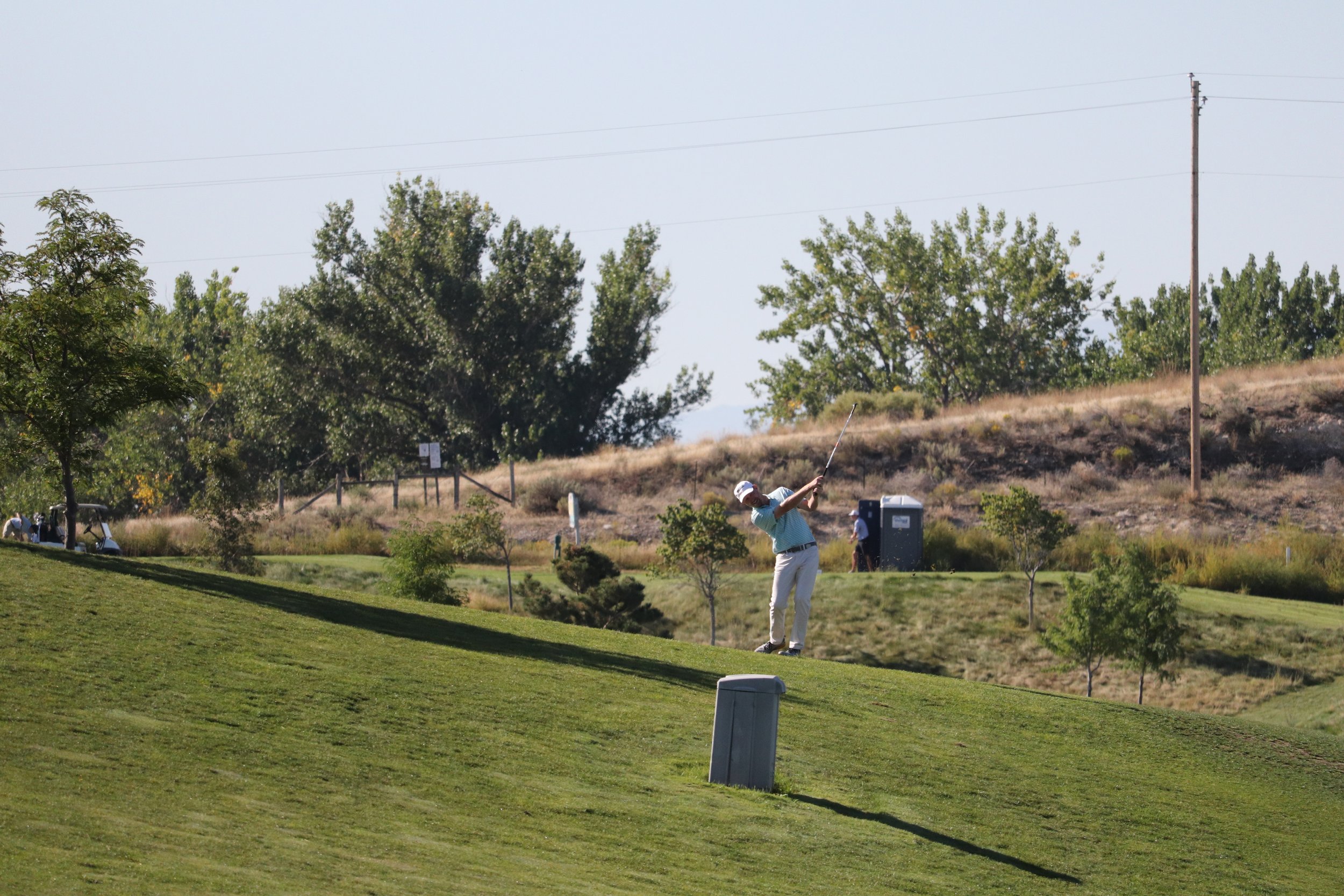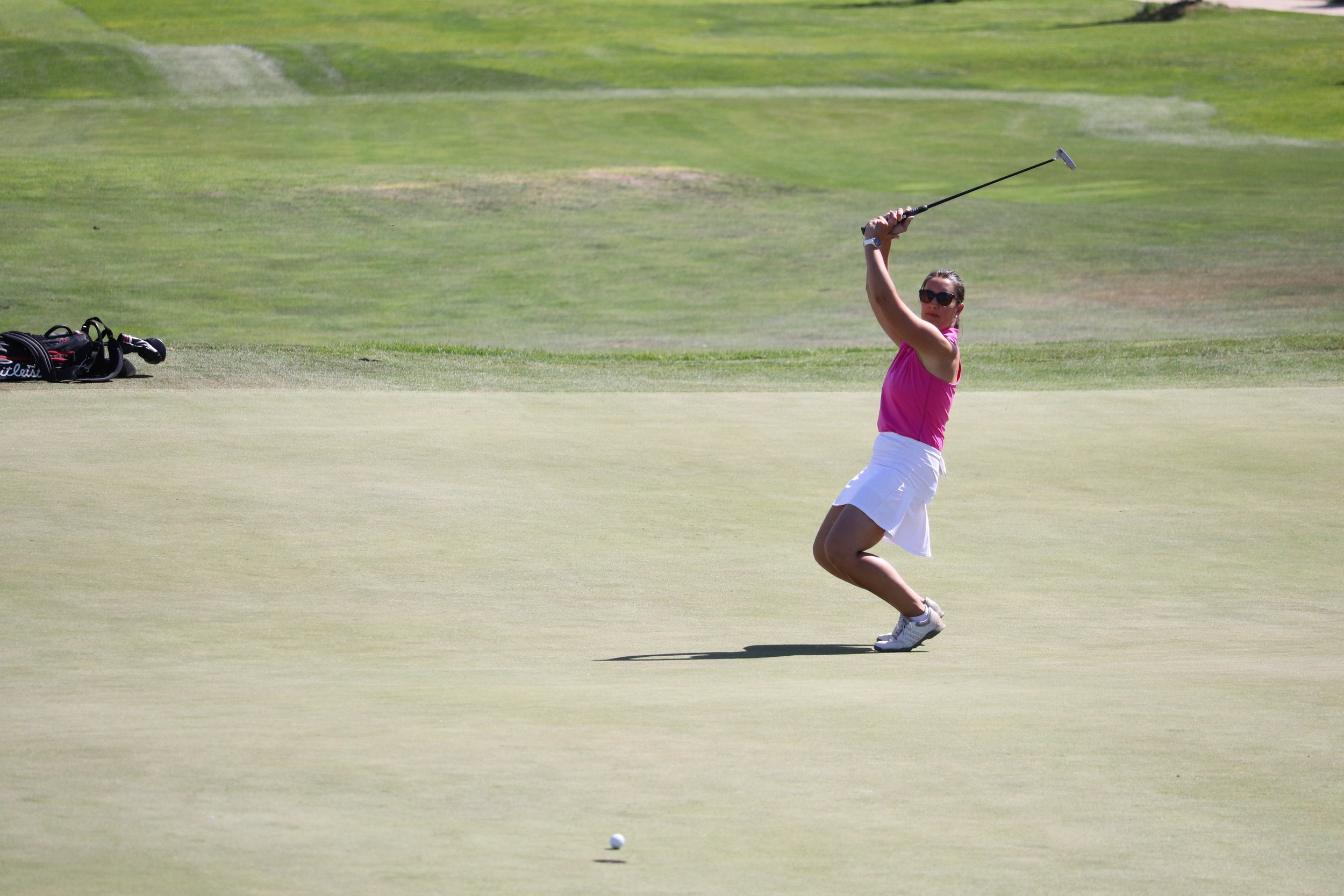Distance, solid putting, good teamwork make winning formula
Written by Beaux Yenchik, Manager of Media and Communications
The majority of the sporting world, including those of us who have invested our time and money in golf, find that most of these recreational hobbies were designed to play with a team. Basketball has five players on the floor with the remaining teammates on the bench. Football and soccer have 11. And you get the picture.
Each team is led by a head coach or manager who schemes and plots the path to victory for those he or she leads. Cultures are established. Team banners are hung from the rafters, while parades glide through cities with celebrations adorning the air.
Yet golf, like tennis, is played as an individual. Each choice, swing, putt, etc. comes down to the operator of the golf club. There is no one to blame but oneself for an errant tee shot or a missed birdie putt from close range. Golf intensifies areas like self-accountability and integrity. But, at the end of the day, aren’t these some of the many reasons why we all love the game of golf?
However, all that individuality gets thrown out the window when it comes to team events like the Ryder or Solheim Cup! (I don’t know about you, but the week of the Ryder Cup is one of my favorite times to watch golf along with the majors.) Wouldn’t you agree?
It isn’t often that golfers get the opportunity to play team golf. You have the exceptions like those who play for their respected school teams, but beyond that, for the however many other 90-something percenters that don’t play in those settings, it can be fun and unknown.
On the local level, the Idaho Golf Association has the occasional team event that gives golfers the opportunity to drop their solo acts and go duet-style in various tournaments: the PNGA Lamey Cup, Hogan Cup, Carter Cup, Girls Junior Americas Cup, etc. These team events for both our adult and junior participants give some of our top players opportunities to play in local or regional events that feel like miniature Ryder Cups.
However, there is an event, the IGA Four-Ball Championship, that gives every IGA member an opportunity to play competitively with a partner against the likes of some of the best amateur golfers around the state. It is a two-day event, and this year it was held at RedHawk Golf Course in Nampa – one of the top public courses around.
The field consisted of 45 teams: 25 men, 11 senior men and nine women pairings. Playing a total of 36 holes, each team set off to compete in what is called a four-ball format. For those of you who don’t know what this specific format is, the USGA defines it as “a form of play (in either match play or stroke play) involving partners where two partners compete together as a side, with each player playing their own ball, and a side’s score for a hole is the lower score of the two partners on that hole.”
Simple enough?



What makes this format very intriguing is the balancing act teams have to have as they make their way through each round. The hope for each team is to have the ability to “ham and egg” it on every hole if necessary — always ensuring that at least one partner is playing well on any given hole.
"One of us hitting a birdie [made] the other one [think] ‘alright, I got this’ [and feel motivated to play better and help the team out],” Katie Dearing said when referring to the effects team play can have.
The teams that faired the most in this challenging but doable style of play were Burke Spensky & Justin Merz (men’s winners), Stephen Hartnett & Louis Burke (senior men’s winners), and Dearing & Denise Smith (women’s winners).
These three pairings tackled the daunting task that RedHawk GC presented to each and every golfer who stepped onto its lakeside grounds. From undulating fairways to hard, fast greens, each of these winners managed to rely on their individual strengths to help carry their teams through to the finish line.
For the three winning teams, it was their ability to be long and straight off the tee on a course that pushed north of 6,700 yards (from the back tees). Though the fairways were generous with their widths, if players got outside those boundaries, the long rough and fescue seemed to strangle all hope for the very next shot — a scenario the winners seemed to manage quite well.
"Distance travels everywhere,” Spensky stated. “You can hit all the greens you want, but if you are 30 feet away, you can three-putt these greens.”
"I think for us, keeping two balls in play was huge,” Dearing added. “So, it took the pressure off of one as long [was in the fairway] or at least in play…”
Though driving the ball far and keeping it straight was helpful, having short games that stood up and did not falter under pressure was even more crucial for these three duos. The team of Hartnett and Burke managed to hold off back-to-back defending champions Jay Sutton and Dan Pickens with a key birdie putt on their final hole of the tournament. Spensky’s 30-foot redemption putt on the second playoff hole to win proved to be a key ingredient down the stretch. Team Dearing-Smith rolled in two birdies in their last three holes to give them a two-shot victory.
Though each team’s philosophy and chemistry were different, each managed to take advantage of their length and accuracy off the tee and their ability to make putts when it mattered — proving team golf to be an exciting challenge unlike any other in this sport.
FINAL RESULTS
-Men’s Four-Ball: Burke Spensky & Justin Merz 65-68 = 133 (-7)
-Men’s Senior Four-Ball: Stephen Hartnett & Louis Burke 70-65 = 135 (-7)
-Women’s Four-Ball: Katie Dearing & Denise Smith 74-69 = 143 (+1)
For a complete look at the 2023 IGA Four-Ball Championships leaderboards, CLICK HERE.
